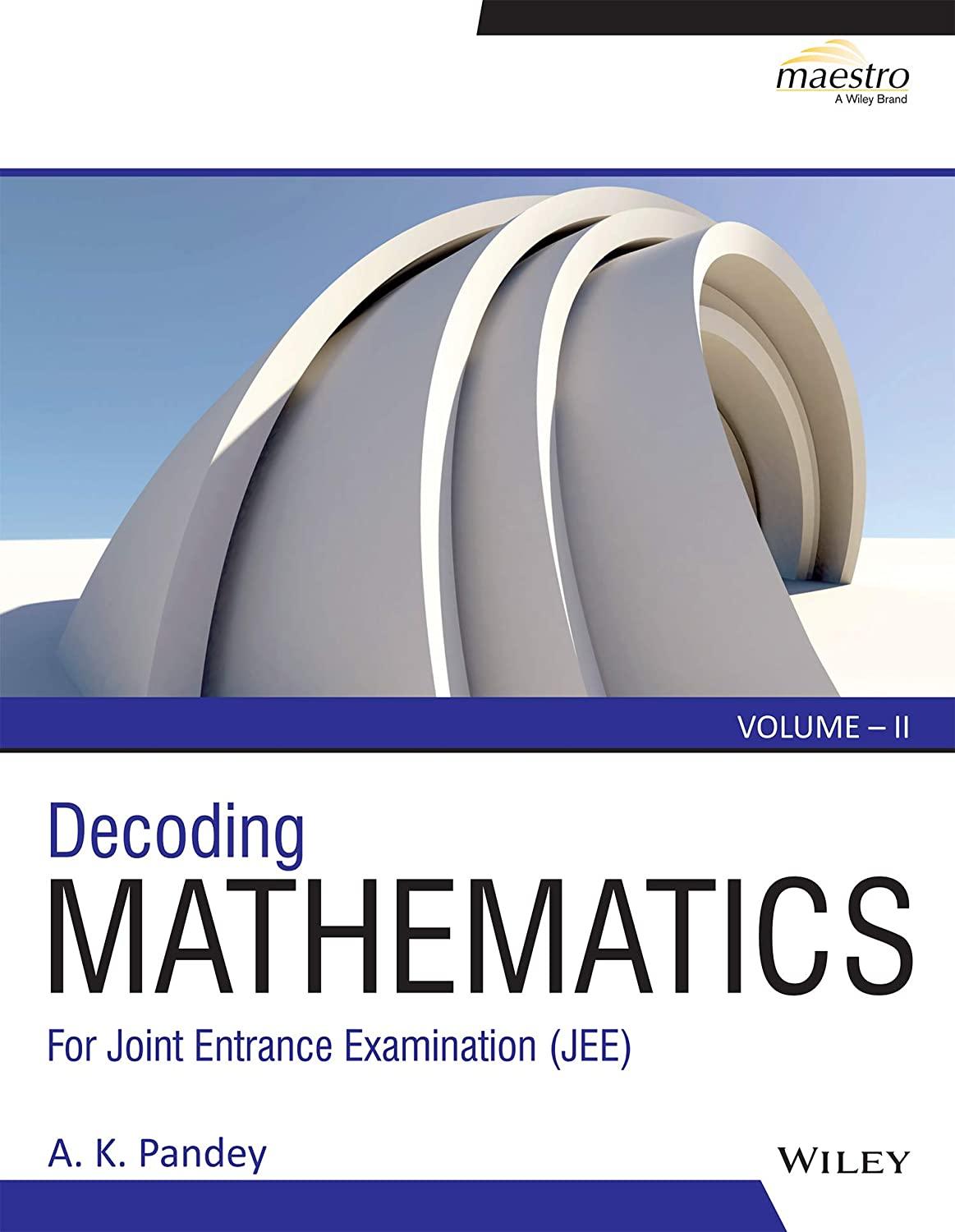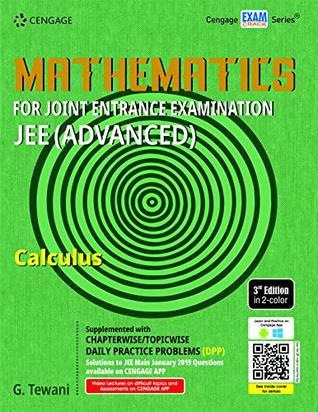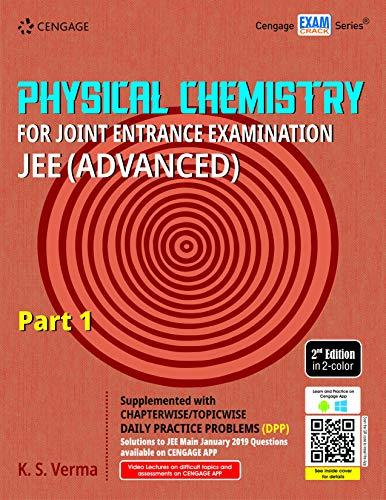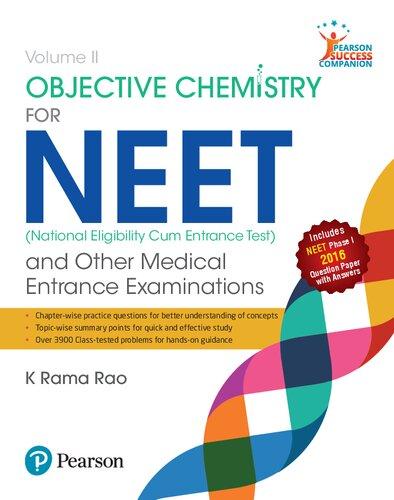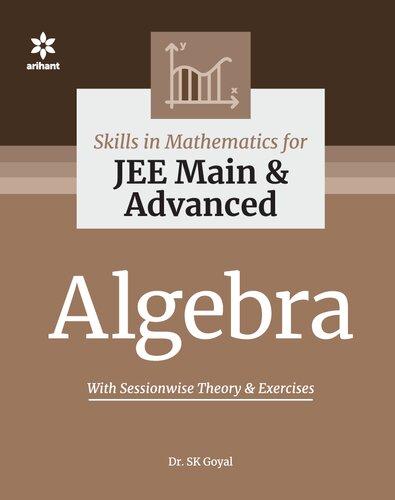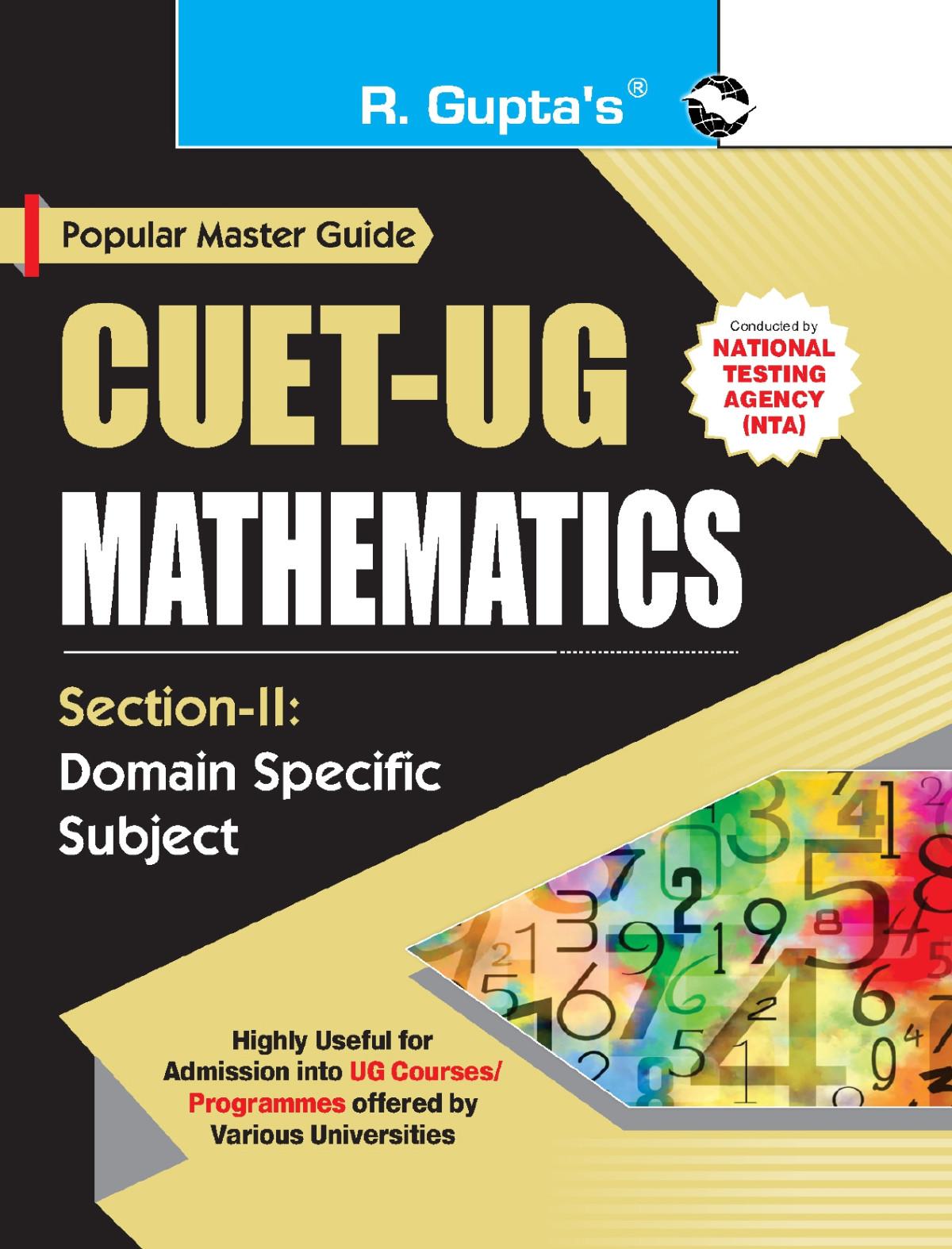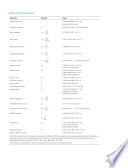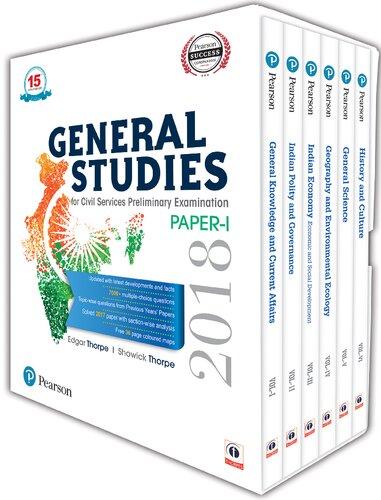MATHEMATICS
For Joint Entrance Examination (JEE)
A. K. Pandey
DecodingMathematicsForJointEntranceExamination(JEE),Volume–II
Copyright©2020byWileyIndiaPvt.Ltd.,4436/7,AnsariRoad,Daryaganj,NewDelhi-110002.
All rights reserved No part of this book may be reproduced, stored in a retrieval system, or transmitted in any form or by any means, electronic, mechanical, photocopying, recording or scanning, without the written permission of the publisher
Limits of Liability: While the Publisher has used best efforts in preparing this book,Wiley makes no representation or warranties with respect to the accuracy or completeness of the contents of this book, and specifically disclaim any implied warranties of merchantability or fitness for any particular purpose There are no warranties which extend beyond the descriptions contained in this paragraph. No warranty may be created or extended by sales representativesorwrittensalesmaterials
Disclaimer: The contents of this book have been checked for accuracy. Since deviations cannot be precluded entirely, Wiley cannot guarantee full agreement. As the book is intended for educational purpose, Wiley shall not be responsible for any errors, omissions or damages arising out of the use of the information contained in the book This publication is designed to provide accurate and authoritative information with regard to the subject matter covered. ItissoldontheunderstandingthatthePublisherisnotengagedinrendering professionalservices
Trademarks: All brand names and product names used in this book are trademarks, registered trademarks, or trade namesoftheirrespectiveholders Wileyisnotassociatedwithanyproductorvendormentionedinthisbook
OtherWileyEditorial Offices:
JohnWiley&Sons,Inc 111RiverStreet,Hoboken,NJ07030,USA
Wiley-VCHVerlag GmbH,Pappellaee3,D-69469Weinheim,Germany
JohnWiley&SonsAustraliaLtd,42McDougall Street,Milton,Queensland 4064,Australia
JohnWiley&Sons(Asia)PteLtd,1FusionopolisWalk#07-01Solaris,SouthTower,Singapore138628
JohnWiley&SonsCanadaLtd,22WorcesterRoad,Etobicoke,Ontario,Canada,M9W1L1
FirstEdition:2020
ISBN:978-81-265-7244-1
ISBN:978-81-265-8606-6(ebk)
Printedat: www.wileyindia.com
Note to the Teachers and Students
DecodingMathematicsforJointEntranceExamination(JEE),Volume–II,forClass12hasbeenorganizedina manner to provide a structured approach to the students as per the requirement of both CBSE and JEE (Main andAdvanced)syllabus.Thisbookusesamultidimensionalapproachtothesubject.
The book is enriched with unique elements and features that help understand, comprehend and apply the fundamentals concepts of Mathematics. It offers key knowledge and skills in Mathematics expected of Class12students,andequipsthemtoapproachCBSEBoardandEntranceExaminationswithconfidence.
We will now walk you through the organization of the content and the effective pedagogical tools that support learning.
Organization of Content
The structureof isas perthe JEE syllabus
DecodingMathematicsforJointEntranceExamination(JEE),Volume–II (Class 1 ). The book begins with and then proceeds to ometry It furthers explains 2 Analytical Geometry Trigon Algebra and Mathematical Reasoning Statistics depicted moves forward to discuss followed by . Number of wellfigures, tables and flowcharts has been added to bring about clear understanding of the topic. A of mportant list I Formulasisprovidedattheendofeachchapter.
Features
Conceptualfeatures
l ChapterOpener
l Topicsdividedintolectures
l ConceptIllustration
l Note
l StudyTip
l ImportantFormulas
l ConceptMap
l Practice Exercises
l Previous Years’ Solved JEE (Main and Advanced) Questions
l Chapter Exercises
l The pedagogy supports to provide enhanced learning experience in this level of students, which is aimed to impart knowledgeandprovideexposuretoapplicationsofMathematics.Thecontentofthebook
l extendthebreadthofknowledgetoinculcateinvestigatoryskillsandcreativethinking.
l promoteanalyticalandproblem-solvingabilities.
l Solved Examples Assesment and Evaluation evaluateprogressofconceptualandapplication-basedunderstandingofcontent.
Preface
Mathematics is an essential subject. Science, technology and engineering cannot thrive without a solid mathematics foundation. Mathematics requires logical thinking and detailed insight of concepts. Without getting a better command over mathematics and developing problem-solving ability, it is difficult to secure a good rank in premier engineering entrance examinations such as JEE Main or JEE Advanced.
As a teacher who is teaching mathematics to JEE aspirants since last 15 years, I realized that mathematics books that are available in the market are merely collection of huge number of problems in each chapter. Now-a-days, student do not find enough time to solve many number of questions in the meagre time that they get amidst their long hours in school as well as in the coaching centres. Therefore, there arises need of a pedagogically rich and organized mathematics books. Keeping this fact in mind, Decoding Mathematics for Joint Entrance Examination (JEE), Volume II has been developed as one such book that helps students develop problem-solving skills at JEE (Class 12) level of syllabus.
The modular treatment of concepts allows the students to learn and cover the syllabus in day-wise Lecture format. The selected and adequate number of Solved Examples, Practice Exercises and Chapter Exercises in each of the chapter of this book addresses all important concepts noticeably. The pedagogy of each chapter, as listed below, is rich in nature to provide a complete package for making the fundamentals of mathematics much more clear:
• Chapter opener figure with text: To increase the inquisitiveness to learn about the chapter and its concepts, a chapter is opening up with an interesting figure related to day-to-day life and discusses about the mathematics concept related to the figure.
• Lectures: Each chapter is divided into different lectures to cover the prominent sections of the chapter for easy studying.
• Concept illustrator: Each lecture is provided with solved problems interlinked with concepts of the respective topics.
• Solved examples: In each lecture, ample number of solved examples is provided to get hold of the concepts strongly.
• Practice questions: Each lecture is provided with good selection of questions to practise.
• Answer with explanation: All practice questions are provided with detailed solutions.
• Important formulas: List of important formulas is included in each chapter for immediately reviewing after studying each chapter.
• Previous years’ JEE (main and advanced) questions: Last 11 years of JEE Main and JEE Advanced questions are included in each chapter. Solutions available at https://www.wileyindia.com/free-resources/
• Chapter exercises: To get the concepts discussed in each chapter, sufficient number of problems is provided for the students to test the students’ preparedness.
• Answer key: Student can match their answer of the questions provided in chapter exercises using answer key provided at the end of each chapter.
• Concept map: For a quick revision of concepts and formulas learnt in each chapter, concept map is added at the end of chapters.
ACKNOWLEDGEMENTS
It is extreme pleasure to express my thanks to Mr. Vikas Gupta, MD, Wiley India to accept my idea and proposal of this much-needed book. I thank Dr. Anjali Chadha, Ms. Meenakshi Sehrawat and Ms. Subathra Natarajan of Wiley India Editorial Team for their overall support and suggestions in getting this book in final shape. I am thankful to my parents, my wife, my daughter and my son for their unconditional support in my effort to bring this book.
In this first edition of the book, I have tried my best to keep the book error free; however, I welcome the readers to point out any error through e-mail: math@prepbuddy.in
A. K. Pandey decodingmath@gmail.com
2.5.1
Chapter 3 Application of Derivatives
3.1
3.15.1
3.15.6
3.15.7
5.1
8.5.1
10.6.1
Chapter 11 Three-Dimensional Geometry
Source: Getty images
LECTURE 1
In this lecture, we will mathematically define a function and will get familiar with few very common and useful types of functions. These commonly used functions include polynomials, algebraic functions, exponential functions, logarithmic functions, absolute value functions, signum functions, greatest integer functions, fractional part functions and constant functions, which we will discuss in later part of this lecture.
1.2 DEFINING A FUNCTION
Let A and B be two non-empty sets and let there exist a rule (or a manner or a correspondence) f, which associates to each element of A – a unique element in B. Then, f is called a function or mapping from A to B. It is denoted by the symbol fAB : → or A to B, which reads f is a function from set A to set B or ‘f maps A to B’.
If an element aA ∈ is associated with an element bB ∈ , then b is called ‘the image of a’ or ‘image of a under f or the value of the function f at a’. Also, a is called the pre-image of b or argument of b under the function f. We write it as b = f (a)
The arrow diagram shown in Fig. 1.2 represents the function f, as defined above, in which an element of set A is connected/mapped to an element of set B. The arrow indicates the association with respective elements, and so on.
■ 1.2.1 FUNCTION – DEFINITION
A function is a special kind of relation that pairs each element of one set with exactly one element of another set. A function, such as a relation, has a domain, a range, and a rule. The rule is the explanation of exactly how elements of the first set A correspond with the elements of the second set B. A function is defined by its rule; some texts make no distinction between the rule of a function and the function itself. If you know the rule of the function, you can easily determine the domain and the range of a function.
Symbolically, a function can be illustrated with a simple drawing shown in Fig. 1.2. The points shown in each set are the elements of the sets. The function f is shown in Fig. 1.3a, and the relation g is shown in Fig. 1.3b.
■ 1.2.2 A FUNCTION AS A SET OF ORDERED PAIRS
Figure 1.3
A function fAB : → can be expressed as a set of ordered pairs in which each ordered pair is such that its first element belongs to A and the second element is the corresponding element of B. As such a function fAB : → can be considered as a set of ordered pairs (a, f (a)), where aA ∈ and faB () , ∈ which is the image of a. As a particular type of relation, we can define a function as follows:
Alternate definition of function: A relation R from a set A to a set B is called a function if
1. each element of A is associated with some element of B
2. each element of A has unique image in B
Thus, a function f from a set A to a set B is a subset of A × B in which each a that belongs to A appears in one and only one-ordered pair belonging to f. Hence, a function f is a relation from A to B satisfying the following properties: Every function from fAB : → satisfies the following conditions:
1. fAB ⊂×
2. aAfaAB ∈⇒ =× ()
3. (, )( ,) abfacfbc ∈∈ ⇒=
Thus, the ordered pairs of f must satisfy the property that each element of A appears in some ordered pair and no two ordered pairs have same first element.
STUDY TIP
Every function is a relation, but every relation is not necessarily a function.
1.3 DOMAIN, CODOMAIN AND RANGE OF A FUNCTION
Let fAB :, → then the set A is known as the domain of f and the set B is known as codomain of f. The set of all f images of elements of A is known as the range of f. It should be noted that range is a subset of codomain. If only the rule of function is given, then the domain of the function is the set of those real numbers, where function is defined.
■ 1.3.1 ALGEBRA OF DOMAINS
If domain of function fx() is D1 and domain of function gx() be D2, then we define fg + , fg - and fg as
1. ()() () ()fgxfxgx += + and its domain is DD12 ∩
2. ()() () ()fgxfxgx -= - and its domain is DD12 ∩ .
3. ()() () ()fgxfxgx ⋅= ⋅ and its domain is DD12 ∩
1.4 SOME USEFUL TYPES OF FUNCTIONS
■ 1.4.1 POLYNOMIAL FUNCTION
If a function f is defined by fxaxaxaxaxax n n a n () =⋅ +⋅ ++ ⋅+ ⋅+1 1 2 2 1 1 0 0 , where n is a non-negative integer and a0, a1, a2, ..., a n are real numbers and a n ≠ 0 , then f is called a polynomial function of degree n. Graph of a polynomial function has no break and it is smooth graph. Few special polynomials are listed in the following:
1. A polynomial of degree one with no constant term is called an odd linear function, that is, f (x) = ax, a ≠ 0 . In case f (x) = 0, it is a constant function, whose degree is not defined.
2. Polynomial functions are those which are satisfying the relation: fxfxfxfx () (/ )( )( /) ⋅= + 11 . They are given as follows:
(a) fxx n () =+ 1
(b) fxx n () =1
Note ■ ■ ■ Here, n is any positive integer.
■ 1.4.2 ALGEBRAIC FUNCTION
A function f is called an algebraic function if it can be constructed using algebraic operations such as addition, subtraction, multiplication, division and taking roots, started with polynomials. For example, we have fxxx () =- + 13 3
Note ■ ■ ■
All polynomials are algebraic, but the converse is not true. Functions which are not algebraic are known as transcendental functions.
■ 1.4.3 EXPONENTIAL FUNCTION
A function fxaexxa () ln == (, ,) >≠ ∈ 01ax is called an exponential function f (x) = ax is called an exponential function because the variable x is the exponent. It should not be confused with power function gxx () = 2 in which variable x is the base.
• For f (x) = ex domain is and range is +
• For f (x) = ax domain is – – {0} and range is + – {1}, that is, (0, 1) ∪ (1, ∞).
■ 1.4.4 LOGARITHMIC FUNCTION
Logarithms and exponents are closely related. Repeated addition of the same number (or quantity) evolves multiplication and the repeated multiplication of the same factor evolves exponentiation. The inverse of these operations leads to extracting roots and taking logarithms. For example, 29 = 512 and 93 = 729, that is, nineth power of 2 is 512 and third power of 9 is 729. In general, for a positive real number a and rational number m, we have am = b, where b is a real number. We can state that the mth power of base a is b We can also say that the logarithm of b to the base a is m
1.4.4.1 Defining Logarithmic Function
If a > 0 and ≠ 1, then logarithm of a positive number m is defined as the index x of that power of a, which equals m, that is, loga m = x if and only if am x = . Therefore, am am log =
The function defined by f (x) = loga x, (a > 0, a ≠ 1) is called logarithmic function. Its domain is (0, ∞) and range is When base is e, then the logarithmic function is called natural logarithmic function and when base is 10, then it is called common logarithmic function
1.4.4.2 Graph of Logarithmic Function
• Case 1: y = loga x, (a> 1)
(a) When 0 < x < 1, x = ay. That is, we should choose those values of y for which 0 < a < 1. Since a > 1, y < 0 ⇒ y ∈(–∞, 0).
(b) When x = 1, x = ay, we must choose that value of y for which x becomes 1, y = 0.
(c) When x > 1, x = ay, we must choose those values of y for which x > 1. Since a > 1, 0 < y < ∞
• Case 2: y = loga x, (0 < a < 1, x = ay)
(a) When 0 < x < 1, we must choose those values of y for which 0 < ay < 1. Since 0 < a < 1, y > 0.
(b) When x > 1, we must choose those values of y for which ay > 1. Since a < 1, y < 0.
g(x) = logax g(x) = logax f (x) = ax, 0 < a < 1 f (x) = ax, a >1 (1, 0)
(a) Graph of f (x) = ax and g(x) = loga x for a Î (0, 1).
▲ Figure 1.4
Note ■ ■ ■ f (x) and g(x) are inverse of each other and their graphs are shown in Fig. 1.4.
1.4.4.3 Properties of Logarithmic Function
1. Let us consider the following:
Multiplying these n equations, we get
or
Else, we can write it as
(b) Graph of f (x) = ax and g(x) = loga x for a > 1.
2. If x1 = x2 = x3 = … = x n = x, then property 1 leads to loga xn = n loga x
3. Now, from properties 1 and 2, we get
4. If x1 = 1 and x2 = x, then
5. Now, let us consider
Let us assume that
Similarly,
6. Changing base property: Let us consider
In general,
STUDY TIP
1. Any real number n > 0 can be written as naan =
2. acbbccloglog =
Proof : Let kabc = log so that
)log (log )
1.4.4.4 Inequalities in Logarithm
Let logap > logaq and let us assume that x = logap ⇒ p = ax and y = logaq ⇒ q = ay
Here, let us consider x > y.
• Case 1: If a > 1, then aaxy > ⇒ p > q
• Case 2: If 0 < a < 1, then aaxy < ⇒ p < q
(a) If a > 1, p > 1, then logap > 0.
(b) If 0 < a < 1, p > 1 ⇒ logap < 0
(c) If a > 1, 0 < p < 1 ⇒ logap < 0.
(d) If p > a > 1 ⇒ logap > 1.
(
(e) If a > p > 1 ⇒ 0 < logap < 1.
f) If 0 < a < p < 1 ⇒ 0 < logap < 1.
(g) If 0 < p < a < 1 ⇒ logap > 1.
X Concept Illustrator 1.1 Prove that log log log, a ab a x x b =+ 1 for permissible values of letters involved in the result.
Solution LHS = loga x·logx ab = loga x (logx a + logx b) = loga x·logx a + loga x·logx b (since logx a = 1/loga x) = 1 + loga b = RHS
Hence, proved.
X Concept Illustrator 1.2 Find the value of x for which log(x + 3) + log(x – 3) = log27.
Solution The given equation is log(x + 3) + log(x – 3) = log27
⇒ log(x + 3)(x – 3) = log27
⇒ log(x2 – 9) = log27
⇒ x2 – 9 = 27
⇒ x2 = 36
⇒ x = 6
Hence, the value of x is 6.
X Concept Illustrator 1.3 Solve for x, log(log) 75 50xx ++ = .
Solution From the given equation, we can write as follows: log( )log 5 0 5 57 15 xx ++ == = ⇒+ +=xx55
⇒ xx += - 55
⇒ x + 5 = 25 + x − 10 x Therefore, x = 2 ⇒ x = 4
Hence, the value of x is 4.
X Concept Illustrator 1.4
It is given that a positive term geometric progression a , a 1, a 2, … and an arithmetic progression b, b1, b2, … with positive common difference. Show that there exists a system of logarithm for which log a n - b n = loga - b ( for any n). Find the base of the system.
Solution Let d be the common difference of the A.P. and r be the common ratio of the G.P. so that
a n = arn (1) b n = b+nd (2)
Taking logarithms on both sides of Eq. (1) to base b (b ≠ 1, b > 0), we get loglog log bb b aanr n =+ (3)
From Eqs. (2) and (3), we get loglog log bb b abanrbnd nn -= +- - (4)
Now, in order that the RHS of Eq. (4) reduces to logb a - b, we must have n logb r - nd = 0 or
b = r1/d
Hence, there exists a system of logarithm to base r1/d such that log a n - b n = loga - b
Alternate Solution Let d be the common difference of the A.P. and r be the common ratio of the G.P., so that b n = b+nd and a n = arn
logx a n = logx a + b n –b (where x = r1/d)
■ 1.4.5 ABSOLUTE
VALUE FUNCTION (MODULUS)
Let x ∈. Then the magnitude of x is called its absolute value and, in general, it is denoted by | x |. Thus, | x | can be defined as
Note that x = 0 can be included either with positive values of x or with negative values of x. As we know that all real numbers can be plotted on the real number line, | x | represents the distance of number x from the origin, measured along the number-line. Thus, | x | ≥ 0. Secondly, any point ‘x’ lying on the real number line will have its coordinates as (x, 0). Thus, its distance from the origin is xxx 22 Þ= || .
1.4.5.1 Basic Properties of Absolute Value Function
1. || || xx =
2.
3.
4. | x + y | ≤ | x | + | y |
5. | x – y | ≥ | x | – | y |
6. | xy | = | x | | y |
7. x y x y y =≠,0
Note ■ ■ ■
The properties 4 and 5 can be put in one compact form, namely,
